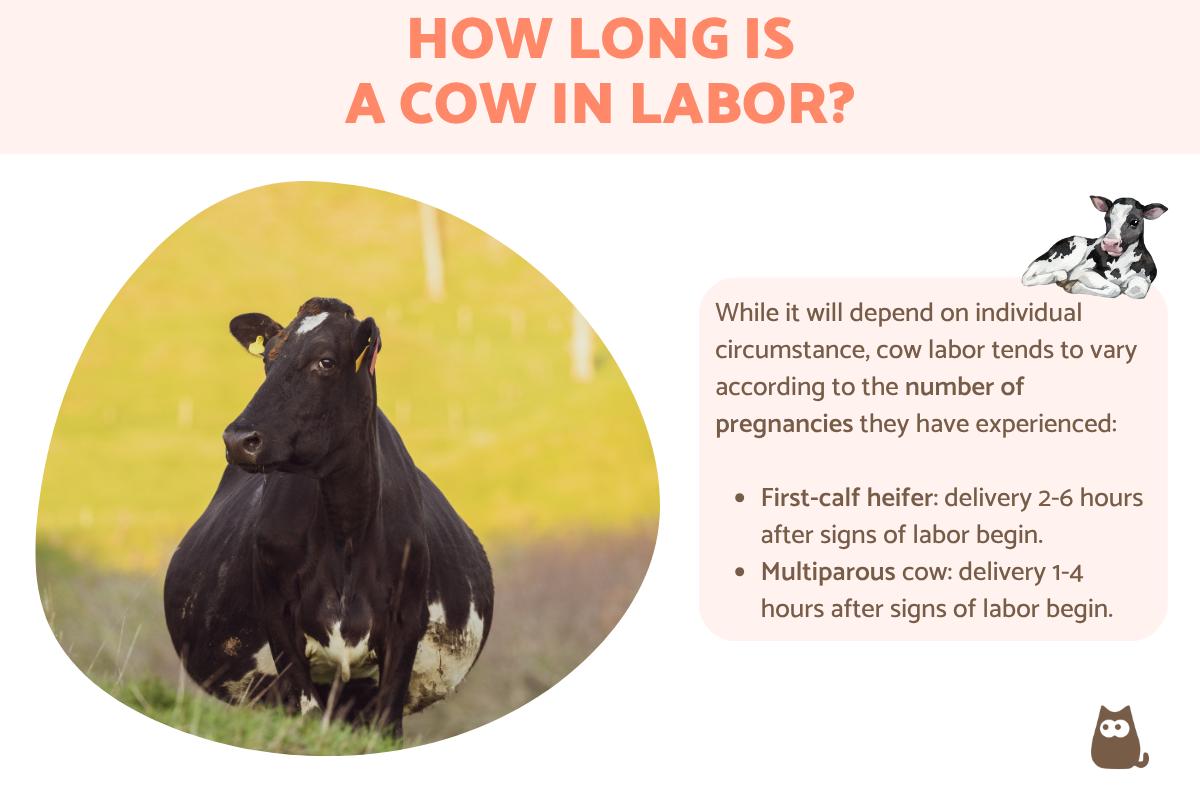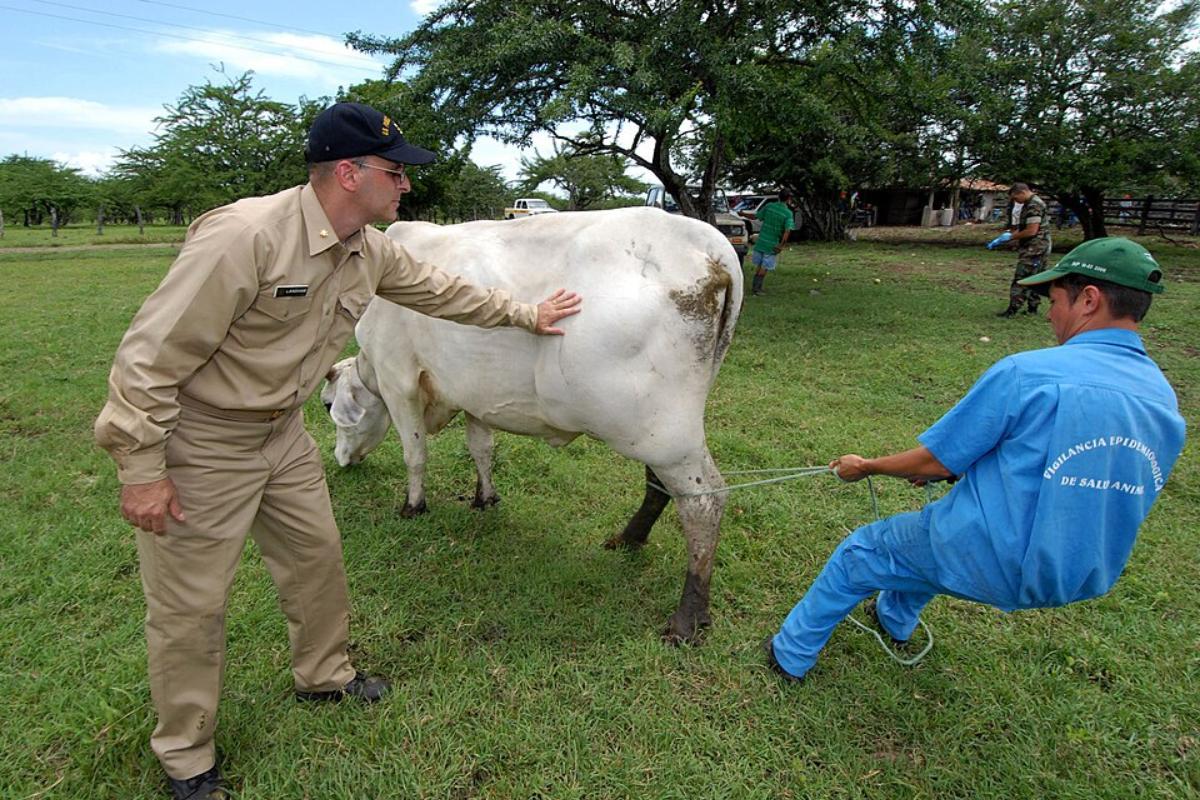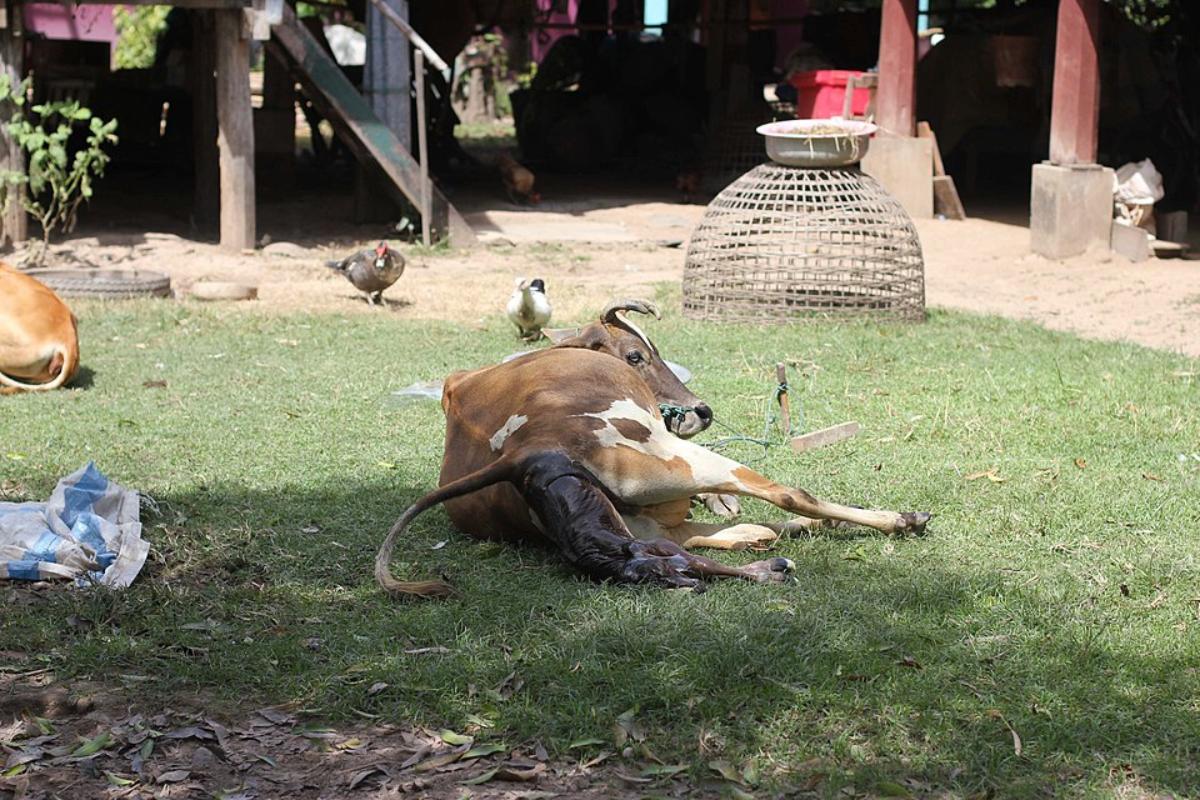How Long Is a Cow in Labor?


Cow labor is also known as calving. Labor complications in wild cattle are believed to be rare. In domestic cattle, selective breeding has resulted in an increase in birthing problems. This is usually due to genetic issues which can increase the possibility of complications, such as an increased risk of dystocia or the cumbersome nature of oversized breeds. When a cow is pregnant for the first time, they are known as heifers. They are also have certain risks that older cows with wider pelvises do not. Veterinarians will need to be particularly careful with these cattle and often provide additional help during the labor process.
At AnimalWised, we explain more about calving with our article asking how long is a cow in labor? We look at the stages of birthing after gestation, as well as the signs a cow is about the give birth and what possible complications may arise.
How do you know if a cow is in labor?
A pregnant cow's gestation period will average around 9 months, the same as human pregnancy. Also similar to humans is the fact that a cow usually only gives birth to one calf at a time, although multiples calves are a possibility. There are various signs a cow is about to go into labor once the gestation period has elapsed. Signs of calving include:
- Increased nervousness: when a cow is about to give birth, her body is telling her she is ready. This can lead to nervousness or agitating, resulting in them looking somewhere safe to calve.
- Swelling and relaxation of the vulvar area: increased hormone production causes the cows vulva to swell and relax to allow for the calf to pass. You may also observe increased mucus secretion.
- Loss of appetite: while cows will eat more during parts of their pregnancy, they will stop doing so shortly before calving. This is to minimize pressure from the stomach during labor.
- Separation from the herd: even if they are not particularly agitated, the cow may separate from the herd and look for a secluded spot to give birth in peace.
- Increased abdominal activity: contractions of the vulva and movements in the abdomen may be observed as the calf is ready for birthing.
- Descent of the amniotic sac: the amniotic sac usually appears before the calf themselves. This fluid-filled membrane surrounds the calf, but it may emerge first and burst before calving is completed.
- Increased respiration and sweating: the cow may show signs of rapid breathing or panting. Excessive sweating due to the exertion and strain of impending birth may also occur.
You can learn more about the gestation period of cattle with our article asking how long does a cow pregnancy last?
How long does it take for a cow to give birth after her water breaks?
When the amniotic sac is ruptured, it is known as their ‘water breaking’ due to the release of the amniotic fluid within. After this point, the birth of the calf is imminent. A multiparous animal is one which has given birth more than once. This is a factor which can affect the delivery time. Multiparous cows may have wider hips due to previous calving, allowing for calves to be born more easily.
In first-calf heifers, the dilation and delivery period can last between two and six hours after their water breaks. The cervix of a heifer will generally be less elastic, slowing the birth compared to multiparous cows. In the latter case, birthing after their water breaks should be faster. This is usually between one and four hours after rupture of the amniotic sac.
It is important to emphasize these are general ranges for birthing times. Each cow is an individual and there are other factors which could speed up or slow down calving. One of the most important considerations is the possibility of calving difficulties such as the calf becoming stuck in the birthing canal. It is for this reason we must monitor the birth closely. If there are concerns or the labor process is taking longer than expected, it's recommended to seek veterinary assistance for proper evaluation and care.
To learn more about the gestation periods of other domestic animals, our related guide explains dog pregnancy week by week.
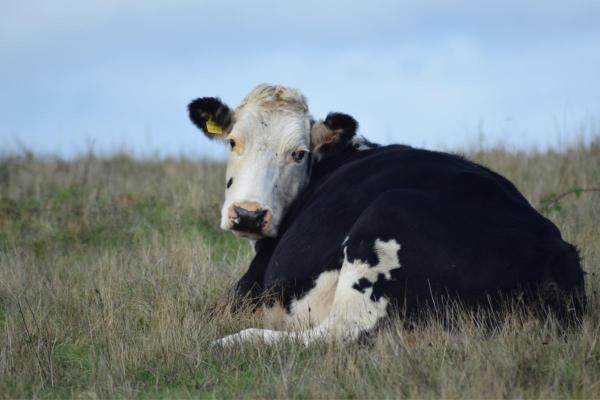
Stages of cow labor
We have already explained the signs a cow is about to give birth and the initial stages of labor. We look in more detail at the stages of cow labor:
- Dilation stage: during this phase, the cow's cervix begins to gradually dilate to allow the calf to pass. As we have explained, this can last anywhere between 1 to 6 hours, depending on whether the cow is a heifer. The mother will show signs of discomfort and restlessness. Heifers might also show some signs of fear since it is a new experience for them.
- Fetal expulsion stage: during this phase, the cow experiences stronger and more rhythmic uterine contractions. It is these which result in the expulsion of the calf. The duration of this phase varies, but it generally lasts from 30 minutes to 4 hours. The calf passes through the birth canal during this time with the head and front legs emerging first. Once the calf has been completely expelled, there is a brief rest period before moving on to the next phase.
- Shedding of the fetal membranes: after the calf is delivered, the cow continues uterine contractions to expel the remaining fetal membranes. This includes the amniotic sac and the placenta. The length of this phase can vary, but it should typically be completed within 6 to 12 hours after calving. It is important that the placenta be delivered completely and remains intact. If the fetal membranes are not fully expelled, there may be a risk of complications such as retained placenta or uterine infection.
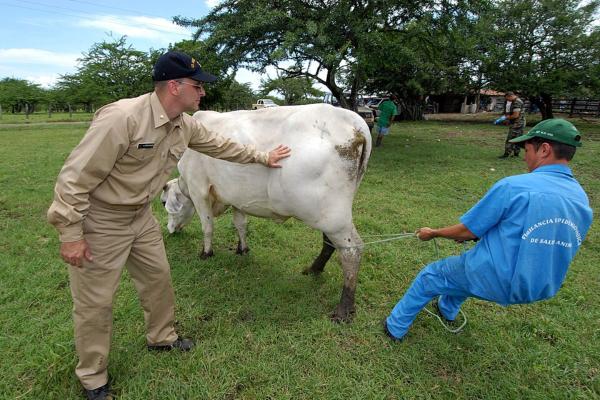
How long does cow labor last?
While there are general guidelines for the duration of calving, how long a cow is in labor will depend on various factors. In some cases, the time of delivery after the water breaking can be delayed. In the majority of cases, the cow will give birth within the 24 hours after the onset of labor. Delayed calving occurs when the delivery is delayed beyond this point, something which may be due to one of the following reasons:
- Calf position: an incorrect or awkward position can lead a calf to become stuck in the birth canal. This can slow the duration of cow labor, but it can also lead to serious complications.
- Calf size: larger calves can take longer to be delivered due to their size. This is something which can be more complicated in domestic cattle breeds since some are bred to be oversized.
- Cow health problems: whether due to preexisting conditions or those developed during gestation, health problems can complicate the cow labor. For example, uterine infections can affect the ability to have effective contractions and delay delivery as a result.
- Environmental and stress factors: environmental changes can result in stressing the mother cow and negatively affect her labor. These include human interventions in the delivery process.
If the calf is not born after the 24 hours since signs of cow labor first appeared, the cow will be entering a sensitive period. They may develop signs of distress or pain. In these cases, a veterinarian should be contacted to help in assisting the birth. A vet experienced in bovine calving can assess the situation and provide treatment if necessary. This may involve manually assisting the birth.
What to consider if a cow gives birth for the first time
Multiparous cows will also need to be observed for possible complications and can face different types of challenges, but we need to be particularly careful with heifers. We should keep the following in mind if a cow is pregnant for the first time:
- Close monitoring: we will need to follow the cow if she moves away to a secluded space and observe from a distance. We can look out for the normal signs of cow labor such as vulvar swelling and behavioral changes. This way we can see if there are any deviations from normal labor.
- Preparing the calving area: while the cow will choose her own space, we can create a clean, dry and comfortable area to help them feel secure. Ensuring they have space away from the herd can also help them to feel safe.
- Qualified assistance: it is advisable to have the assistance of a veterinarian with experience in managing bovine births. They will be able to provide the necessary assistance in case of complications or difficulties during delivery.
- Monitoring for signs of progress: once cow labor begins, we will need to maintain close monitoring for the stages of cow labor. If there is no progress after 24 hours or there visible signs of distress, you will need to contact a veterinarian immediately.
- Assistance during calving: you should avoid unnecessary interference during the calving, allowing the cow to follow the process as naturally as possible. If there are issues such as incorrect positioning in the birth canal, then assisstance will be necessary
- Post-calf care: after the calf is born, make sure both cow and calf are in a safe environment. Watch to see if the calf stands up and begins to nurse. Ensure the cow expels the fetal membranes properly and that there are no post-calf complications.
Remember that the birth of a first-time cow may require more attention and supervision than that of a multiparous cow. They should have had regular checkups with the veterinarian during gestation to help ensure labor goes smoothly.
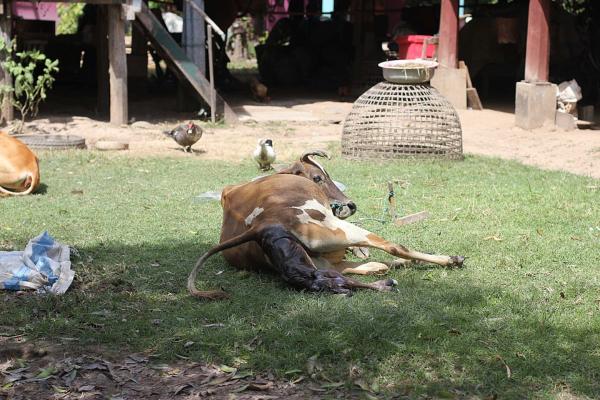
Complications of cow labor
We have already mentioned some of them, but there are various possible complications of cow labor which they may experience. Some of the most common calving complications include the following:
- Dystocia: also known as obstructed labor, it occurs when the calf is stuck in the birthing canal. This could be due to the calf being too large or the canal being too small, but it can also occur if the calf is in an awkward position. Veterinary assistance may be required to manually extract the calf.
- Retained placenta: in some first-calf cows, there may be a retained placenta. This occurs when the fetal membranes are not fully expelled after the calf is born. This can cause complications and increase the risk of uterine infections. If the placenta is not completely expelled within 12 hours of calving, veterinary assistance should be sought.
- Insufficient progesterone: there may be insufficient production of progesterone in heifers. This is a hormone essential for maintaining pregnancy. Progesterone insufficiency can lead to premature or delayed delivery. If suspected, a veterinarian should be consulted for evaluation and possible treatment.
- Agalactia: some first-calf cows may experience problems with milk production after calving, something which is known as agalactia. This can be due to a variety of factors, such as poor nutrition or hormonal disorders. Agalactia may require veterinary intervention to ensure the calf receives adequate nutrition.
We will need to seek veterinary assistance if there are any signs of the above complications. We also will need to ensure the cow has regular checkups during gestation to troubleshoot any potential problems. Extra care will need to be provided to pregnant cows in terms of diet and other factors that affect health. You can learn more about what to expect with our article asking what do cows eat besides grass?

If you want to read similar articles to How Long Is a Cow in Labor?, we recommend you visit our Gestation category.
- Hopper, R. M. (Ed.). (2021). Bovine reproduction. John Wiley & Sons.
- Berglund, B., & Philipsson, J. (1987). External signs of preparation for calving and course of parturition in Swedish dairy cattle breeds. Animal Reproduction Science, 15(1-2), 61-79.
- Gomes, W. R., & Erb, R. E. (1965). Progesterone in bovine reproduction: A review. Journal of Dairy Science, 48(3), 314-330.





